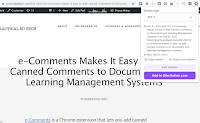Beyond the Rankings: The College Welcome Guide
College decisions used to depend mostly on an institution’s academic reputation and its social life. Today, many other factors influence a prospective student’s thinking. We’ve gathered those into this interactive College Welcome Guide, to help you assess how receptive colleges are to students from a variety of backgrounds, and to map state laws that affect college students.
If you have a question about the information here, or would like to share your perspective with us, email us at editor@hechingerreport.org.
The table below has data for more than 4,000 colleges and universities on enrollment and graduation rates by race and income, faculty demographics, freedom of speech climate, incidence of hate crimes and services for veterans and students with disabilities. It also shows students by age, gender and the proportion who are first in their families to go to college.
You can explore this data by clicking the buttons at the top of the table. After selecting a category, enter the name of a college or university in the search bar. The table resets when the data type is changed, so if you change the category, you need to enter the college name again.
Colored dots under some college names indicate whether the institution is religiously affiliated and/or serves a significant portion of particular types of students, including those who are Black, Hispanic, Asian-American and Indigenous. We also mark institutions that are in rural places or serve students from those areas. A key at the bottom of the table describes what each colored dot represents.
The map below shows laws and policies that affect students, across nine categories in all 50 states, the District of Columbia and Puerto Rico.
You can explore categories by clicking on the buttons. (By default, the map shows which states restrict the teaching of critical race theory, or CRT, in higher education.) Click on any state to see additional information for particular categories. The sources of information for each category are noted at the bottom of the map, and linked so you can learn more.
Among other things, these maps show whether states offer resident tuition or free tuition to veterans even if they aren’t using GI Bill benefits. (The federal government requires that veterans qualify for in-state tuition if they’re on the GI Bill, regardless of where they live.)
In addition to constraining or banning the use of diversity, equity and inclusion programs, some states have ordered that public universities disclose how much they spend on DEI efforts — a step that has historically served as a precursor for legislatures to cut public institutions’ budgets by those amounts.
Anti-trans laws shown here are those passed since 2022 and include measures restricting trans athletes or medical procedures for people including those of college age.
State laws allowing or restricting the use of student IDs to vote can also affect students. In Georgia, for example, students at public universities can use a student ID to vote, but those at private universities – including several historically Black institutions – cannot.
LGBTQ+ Profile scores from the Movement Advancement Project reflect the proportion of adults in a state who are LGBTQ+ and state policies and laws around LGBTQ+ issues.
In addition to the reproductive rights laws listed in our maps, total or near-total abortion bans have been signed into law but are so far enjoined by courts in these states: Iowa, Ohio, South Carolina, Utah, West Virginia and Wyoming.
Prospective students might also care about how likely they are to succeed at a given college. The graphic below shows graduation rates, both for the entire student body and broken out by race or ethnicity, and you can compare up to five colleges on any of these measures.
Choose a category from the dropdown at the top of the graphic and then enter a college or university in the search bar; institution names will appear as you begin to type.
You can learn more about all our data sources here.
Design and development by Fazil Khan
Additional reporting by Meredith Kolodner, Jon Marcus, Olivia Sanchez, Amanda Chen and Sarah Butrymowicz
Illustration by Camilla Forte




